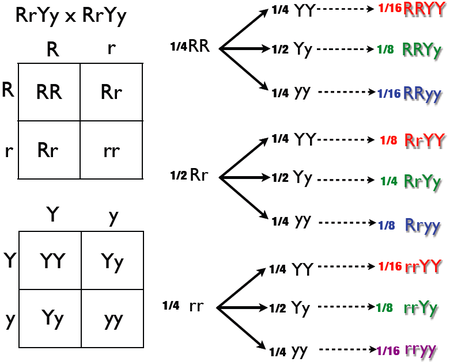 |
| https://en.wikipedia.org/wiki/Punnett_square |
Summary: This week in class we learned about trait chances. The trait chance is determined by the genotype of the parents if there are two dominant traits the baby will not have a recessive trait. Some traits have a 0% chance of appearing if there are only the same genotype. FUN FACT: The thing that calculates trait probability is called a punnet square.
SP4: Analyzing and interpreting data
We analyzed data in class by looking at punnet squares and determining the probability of the trait. We interpreted data by converting the probability of the trait into percentages.

